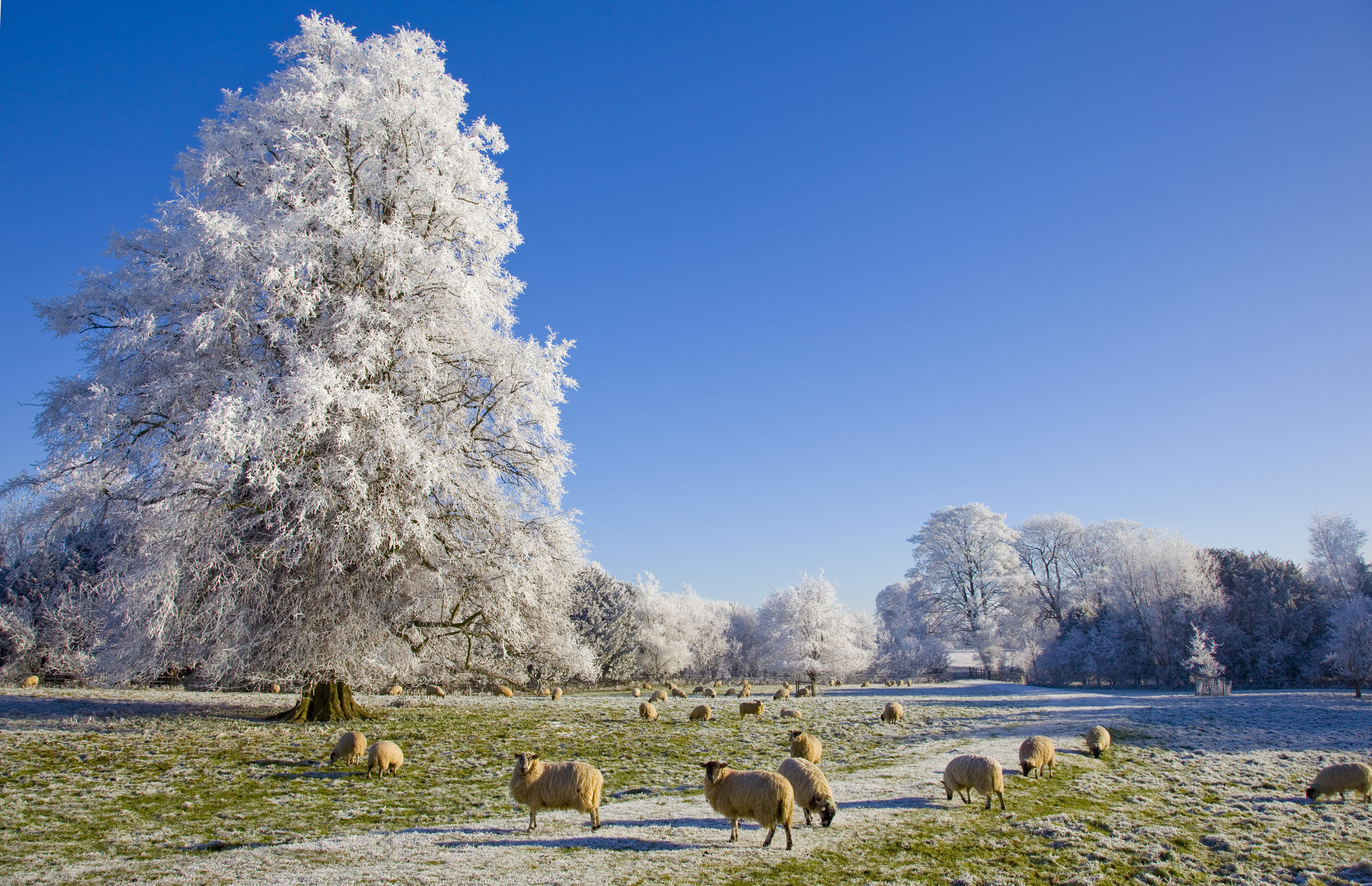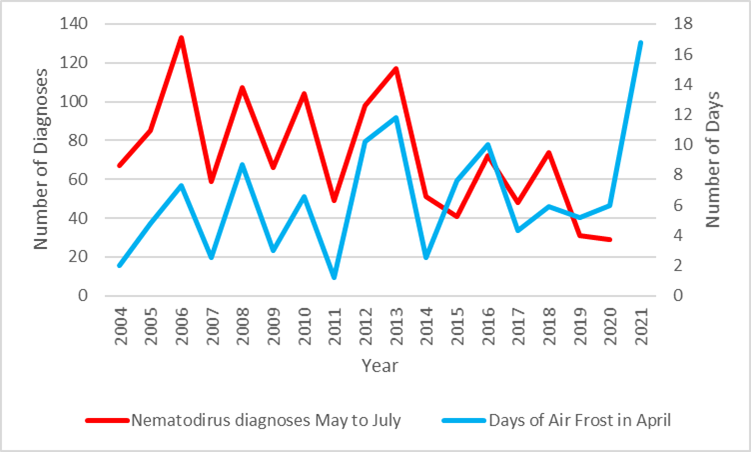High Risk of Nematodirosis Likely in 2021

A higher number of days of air frost in April has a significant impact on nematodirosis cases in lambs.
Outbreaks of nematodirosis in Scotland are recorded most often between May and July, with a consistent peak in the month of June.
The number of diagnoses tend to be higher in years when cold weather persists into April. The graph below shows a close relationship between the number of days of air frost in April and the number of nematodirosis diagnoses recorded by SRUC Veterinary Services between the months of May and July. April 2021 has been colder than average across Scotland with a mean temperature of 4.6˚C and air frost recorded on a very high number of days.
A cold spring delays the hatching of Nematodirus battus eggs to a time when large numbers of lambs fall into the highest risk age group of 6 to 12 weeks old. The SCOPS nematodirus forecast is currently showing most areas of Scotland to be low to moderate risk, but this may change rapidly in the coming weeks.
Farmers should be advised to investigate outbreaks of scour as soon as they arise. Diagnosis can be complicated by concurrent high coccidial oocyst counts (whether from high or low pathogenic species), and the fact that clinical signs can arise in the pre-patent period.

SRUC Veterinary Services nematodirus diagnoses in Scotland for May to July compared to the number of days of air frost in April.
Reference: Meteorological Office UK Rank Ordered Statistics
Posted by Veterinary services on 29/04/2021
